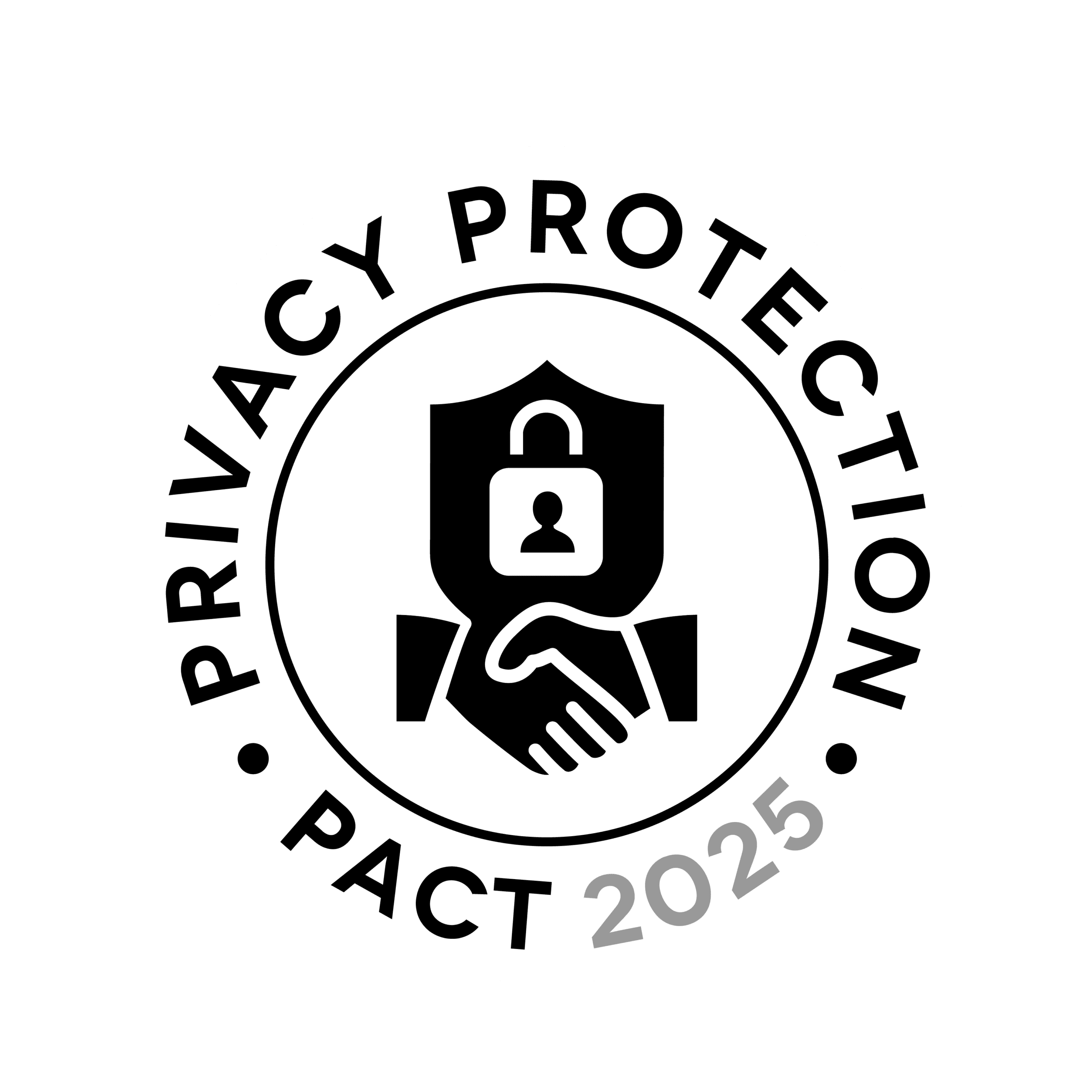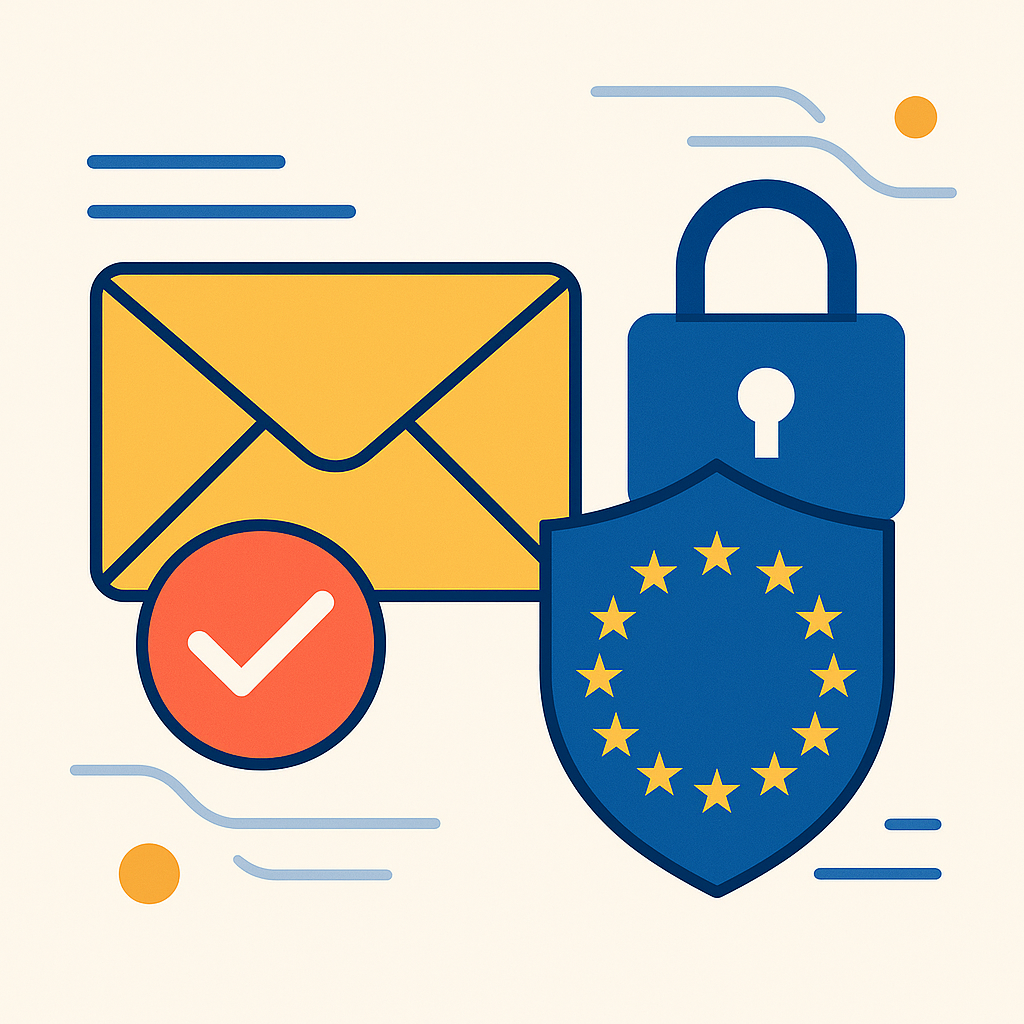Emailing remains one of the most effective channels for communicating with prospects and customers. But in Europe, its use is framed by strict rules designed to protect personal data. Between the RGPD and the ePrivacy directive, it’s no longer enough simply to have an email list: you also have to ensure that contacts have given their consent, that their data is secure, and that every mailing complies with the laws in force. Compliance isn’t just about avoiding sanctions: it’s also about strengthening the trust and quality of your customer relationships.
1. The two pillars of regulation
1.1. RGPD: the basis for all data collection in Europe
Since 2018, the General Data Protection Regulation (GDPR) has been the reference text for personal data protection in the European Union. It applies to any organization, European or not, as long as it processes data relating to EU residents, which of course includes email campaigns.
The RGPD covers any information that directly or indirectly identifies a person: surname, first name, email address, browsing behavior, etc. To put it plainly, every email marketing sent to a European individual falls within the scope of the RGPD.
Fundamental principles :
-
Legality, fairness, transparency: recipients must be clearly informed about the use of their data.
-
Minimization: only strictly necessary data should be collected (e.g. e-mail, first name).
-
Limited shelf life: no need to keep contacts inactive for years.
-
Security and confidentiality: your databases need to be protected against leakage or unauthorized access.
What is the legal basis for sending emails?
Two main options are provided by the RGPD:
-
Explicit consent
The recipient gives his consent freely and with full knowledge of the facts. This consent must be active (box unchecked by default), and documented (proof to be kept). -
Legitimate interest
In certain cases (particularly in B2B or for existing customers), the company can justify sending information without formal consent, if it can demonstrate that this does not infringe the rights of the recipient. This requires a formal balancing test.
💡 Practical tip: in the absence of a pre-existing relationship or B2B context, explicit consent remains the safest route.
1.2. The ePrivacy Directive: the specific framework for electronic communications
Less publicized than the RGPD, the “Privacy and Electronic Communications” directive, often referred to as ePrivacy, complements the RGPD by providing a framework for communication methods: emails, SMS, cookies, etc. It lays down the ground rules for electronic canvassing and consent gathering via websites.
Unlike the RGPD, this directive is not directly applicable: it is transposed into national laws, leading to variations from country to country. This makes compliance more complex for Europe-wide email campaigns.
Consent and prospecting: the main points
-
In principle, prior consent is required to send a commercial e-mail to an individual.
-
This consent must be clear, free, specific and informed, and given through an explicit action (e.g. checking a box, validating a form).
-
Some countries require double opt-in (e.g. Germany, sometimes France), i.e. confirmation of the email address by clicking on a validation email.
-
Others tolerate soft opt-in under strict conditions: if the person is already a customer, and the message concerns similar products or services.
🔎 Example: in France, article L34-5 of the Code des postes et des communications électroniques takes up this logic, with an exception for existing customers, provided they are offered a simple option to unsubscribe.
 For several years, Ediware has taken rigorous measures to ensure the protection of its customers’ and partners’ personal data. Thanks to the Privacy Protection Pact, the company guarantees ongoing compliance with the requirements of the RGPD and ePrivacy directives, ensuring security, transparency and respect for consent in all its operations, including email campaigns.
For several years, Ediware has taken rigorous measures to ensure the protection of its customers’ and partners’ personal data. Thanks to the Privacy Protection Pact, the company guarantees ongoing compliance with the requirements of the RGPD and ePrivacy directives, ensuring security, transparency and respect for consent in all its operations, including email campaigns.
2. Best practices for collecting and managing consents
To send email campaigns that comply with European regulations, it’s essential to follow certain best practices, particularly when collecting and managing user consent. Here are the key points to implement:
Structured, informative form
From the outset, your registration form should indicate in a simple, understandable way why you’re collecting the email address. Is it to send a newsletter, commercial offers or satisfaction surveys? Make this clear.
Make sure each purpose is clearly identified, and avoid pre-ticking boxes. Internet users must make an active choice to give their consent. For example, they can tick one or more boxes themselves, depending on the type of message they wish to receive.
Double opt-in: a guarantee of reliability
Although not mandatory, double opt-in is strongly recommended. This involves sending a confirmation email after registration, asking the user to click on a link to validate their choice. This guarantees that the address is valid and that consent has been given. It’s also a good protection in the event of a control or complaint.
Preference management
Offering a preference center gives your subscribers greater control over what they receive. They can choose the frequency of messages (weekly, monthly…), the type of content (news, promotions, events), or change their contact details. This improves the user experience and reduces unsubscribing.
Quick and easy to unsubscribe
Every marketing email you send out should have a visible unsubscribe link, usually at the bottom of the message. This link should work in a single click, with no complicated steps. As soon as a person unsubscribes, you should stop sending within 24 hours. This shows that you respect their choices and helps preserve your reputation as a sender.
3. Data security and storage
Once you’ve collected your contacts’ e-mail addresses, it’s important to protect them. In the event of leakage or mismanagement, you’re not only legally liable, but your credibility is also at stake.
First of all, your databases need to be encrypted. This means they must be protected by security protocols such as TLS/SSL during exchanges, and ideally also encrypted at rest (in your servers or CRM tools). This prevents unauthorized access.
Next, limit access to this data. Only authorized persons, such as your communications manager or marketing service provider, should be able to consult or manipulate e-mail lists. To achieve this, set up restricted access rights and avoid uncontrolled sharing.
Finally, don’t forget that you can’t keep data indefinitely. It is recommended to delete contacts that have been inactive for more than 2-3 years, unless they have expressed a new interest. This is part of the RGPD’s “minimization” and limited retention obligations.
4. Specific national requirements: a framework that varies across Europe
Although the RGPD is common to all EU countries, the precise rules for email marketing may vary slightly between member states, not least because of local transposition of the ePrivacy Directive.
Here are a few examples to be aware of if you are sending emails to contacts in different European countries:
| Country | Opt-in required | Local peculiarities |
|---|---|---|
| France | Yes | The CNIL strongly recommends the use of double opt-in to prove consent. |
| Germany | Yes | The framework is very strict: the absence of formal proof of consent can lead to substantial fines. |
| Spain | Yes | It is compulsory to keep a record of the consent given by the user. |
| Belgium | Yes | All marketing communications must be based on explicit consent, even where there is an existing customer relationship. |
This means that, even if you’re based in just one country, you need to adapt your practices if you have subscribers abroad. To remain compliant, it’s often simpler to apply the strictest standards (such as double opt-in and proof archiving) to all your mailings.
To conclude
Complying with email marketing legislation in Europe is essential to avoid penalties and build lasting relationships with your contacts. But beyond legal obligations, it’s also an opportunity to adopt more efficient and secure tools.
Rather than collecting and sending emails yourself, we strongly recommend using a professional emailing router. These platforms offer much more than just sending: they automatically manage consents, unsubscriptions, double opt-in, data security and campaign traceability. They keep pace with regulatory changes, and help you avoid technical or legal errors.
In short, a professional router means more compliance, greater reliability and real time savings, while improving the deliverability and performance of your campaigns. A solution that’s both strategic and reassuring for any company anxious to do things by the book… and efficiently.

